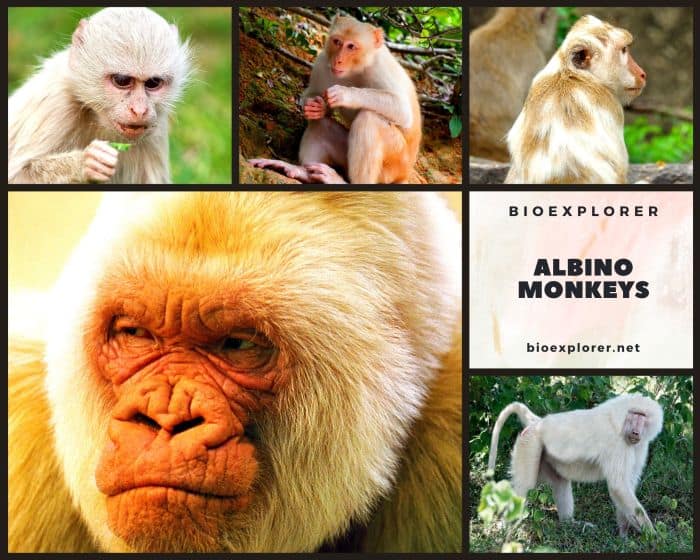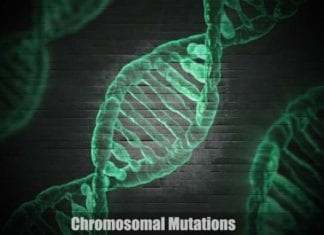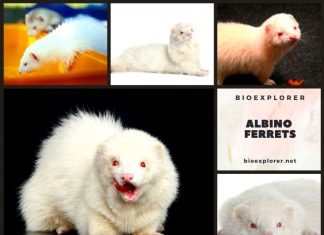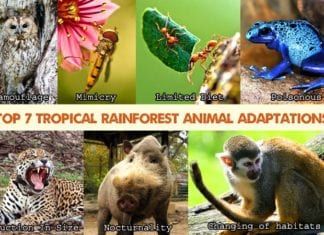In the vast and vibrant tapestry of the animal kingdom, a unique thread weaves a captivating narrative of nature’s diversity: the albino monkeys. These extraordinary creatures, marked by their lack of pigmentation, defy the standard hues of their species and stand out with their striking white coats and light-colored eyes.
Table of Contents
As fascinating as they are rare, albino monkeys serve as a poignant reminder of the countless genetic variations and survival adaptations that underlie the rich biodiversity of our world.
The following exploration into the lives of these unique primates offers an insightful look at their unique physiology, challenging survival strategies, and the mesmerizing tales that their existence conjures in various human cultures.
Understanding Albinism in Monkeys
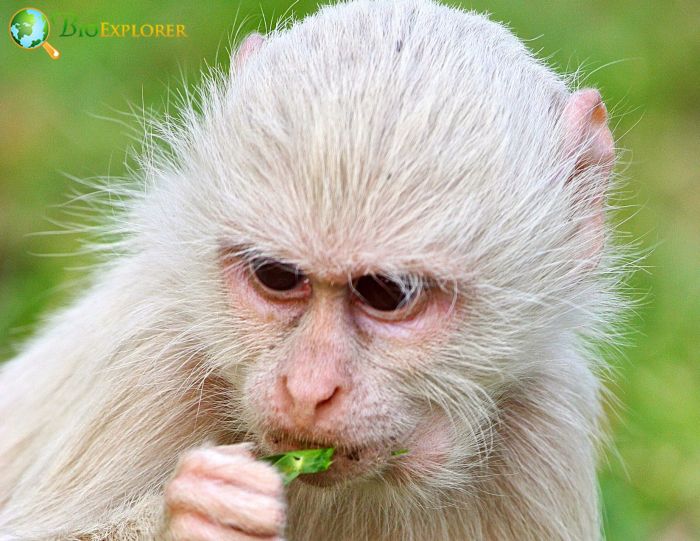
Albinism, a rare genetic anomaly observed in monkeys, is also noted across other species, including humans. Here we delineate the key attributes of this condition in monkeys:
- Albinism results in a distinct lack of pigmentation in the monkeys’ skin, hair, and eyes, giving them a uniquely pale or white appearance.
- Though scarce in primates, albinism poses substantial challenges, such as impaired vision, heightened susceptibility to dermal ailments and sunburn, and increased difficulty in food acquisition and threat evasion[1].
- In the field, albinism has been infrequently reported among non-human primates, with few occurrences noted in species like toque macaques, bonnet macaques, Chimpanzees, and rhesus monkeys[2].
- Focused molecular studies on rhesus monkeys have identified a specific point mutation as the causal factor for the albino phenotype.
- For disease mechanism and therapeutic development studies[3], certain models of rhesus macaques exhibiting spontaneous oculocutaneous albinism have been utilized.
- Due to their conspicuous appearance, albino monkeys face an elevated risk of predation and a higher probability of developing sunburn and skin cancer.
- Globally, the rarity of albino monkeys underscores their uniqueness in the broader primate population.
- Documented cases of complete albinism are rare, such as a female juvenile Central American spider monkey from Eastern Honduras[4].
Albinism, while infrequent in monkeys, imposes considerable challenges, including vision impairment, vulnerability to skin ailments and sunburn, and difficulty in food acquisition and threat evasion. The global population of albino monkeys remains sparse, emphasizing their exceptional nature.
Suggested Reading:
Can Animals Have Down Syndrome?
The Genetics of Albinism in Monkeys
Albinism functions as an autosomal recessive genetic condition. For a monkey to exhibit albinism, it necessitates the inheritance of two copies of the affected gene, each contributed by a parent. When a monkey inherits a single copy of this gene, it becomes a carrier for the condition. However, the traits of albinism remain unexpressed[5].
The genetic underpinnings of albinism can be traced back to specific genes that regulate the synthesis and distribution of melanin – a pigment responsible for skin, hair, and eye coloring. Consequently, mutations within these genes lead to decreased or absent melanin production, manifesting in albinism.
Albinism is linked to several genes, with the specific type of albinism dictated by which gene has been mutated. As an example, mutations in the TYR gene result in oculocutaneous albinism type 1 (OCA1), which is commonly observed in humans and animals, monkeys included. OCA1 leads to an exhibition of white or exceedingly light hair and skin, along with blue eyes at birth, which might undergo slight darkening as age progresses.
Contrarily, the mutation of the OCA2 gene results in oculocutaneous albinism type 2 (OCA2), wherein melanin levels are somewhat higher, causing light yellow to brown hair and skin and eyes that range from light blue to brown.
Investigating the genetic foundation of albinism in monkeys aids in diagnosing and managing this condition. It furnishes critical insights into genetic functionalities and hereditary patterns. This understanding also underscores the imperative role of genetic diversity and targeted conservation initiatives in ensuring these exceptional organisms’ sustained health and survival.
Suggested Reading:
Overview of Chromosomal Mutations, Types & Examples
Species of Albino Monkeys
Albinism, while rare, has been identified in various monkey species, giving rise to visually distinct and intriguing animals marked by their characteristic pale or white appearance. The following narrative delves into some of the primate species known to exhibit albinism:
Albino Orangutans
Albinism in orangutans, typically recognized by their reddish-brown fur, is uncommon. Alba, a rescued female Bornean orangutan in Indonesia, is a notable example. “Alba,” translating to “white” in Latin and “dawn” in Spanish, is presently considered the solitary instance of an albino orangutan globally[6].
Albino Gorillas
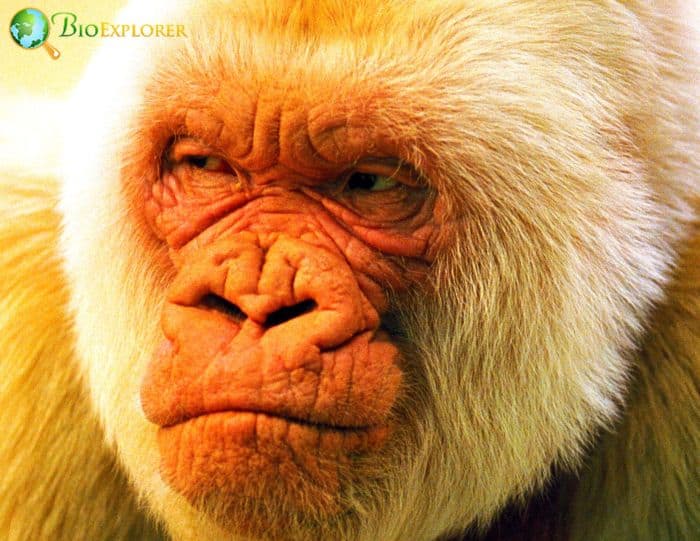
The phenomenon of albinism in gorillas is highly unusual. Snowflake[7], a Western lowland gorilla resident of Barcelona Zoo, is arguably the most renowned albino gorilla. Snowflake’s albinism, a product of inbreeding, distinguished him until his demise in 2003. His white fur and pinkish eyes made him appealing, and his existence has substantially advanced our comprehension of albinism in primates.
Suggested Reading:
What Do Gorillas Eat?
Albino Capuchin Monkeys
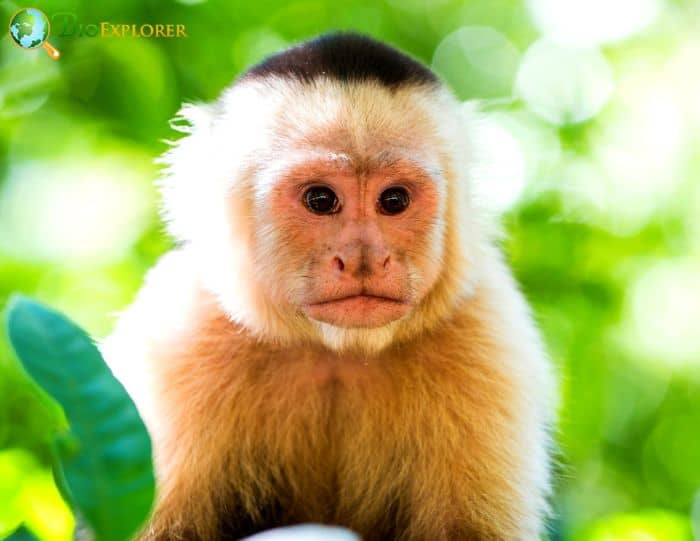
Though rare, albinism has been recorded in Capuchin monkeys, recognized for their intellectual capabilities and frequent usage in research and as service animals. An albino Capuchin would exhibit white or lightly colored fur, skin, and red or pink eyes. The impact of albinism on their social interactions with other Capuchins is potentially noteworthy, given these monkeys’ dependence on visual cues.
Suggested Reading:
Albino Ferrets
Albino Spider Monkeys
Instances of albinism have been observed in Spider monkeys, indigenous to Central and South America’s tropical forests. The stark contrast of an albino spider monkey against the green forest canopy can make them more visible to predators[8].
Albinism poses unique challenges and risks for each species, including heightened visibility to predators, increased susceptibility to sun-induced damage, and possible social exclusion.
Despite these hurdles, the mesmerizing beauty of these albino monkeys offers valuable insights into genetics and albinism, underlining the necessity of conservation initiatives to safeguard and research these rare creatures.
The Life of Albino Monkeys
The life of an Albino Monkey is marked by unique challenges and experiences, influenced significantly by their genetic condition.
Lifespan and Health Issues
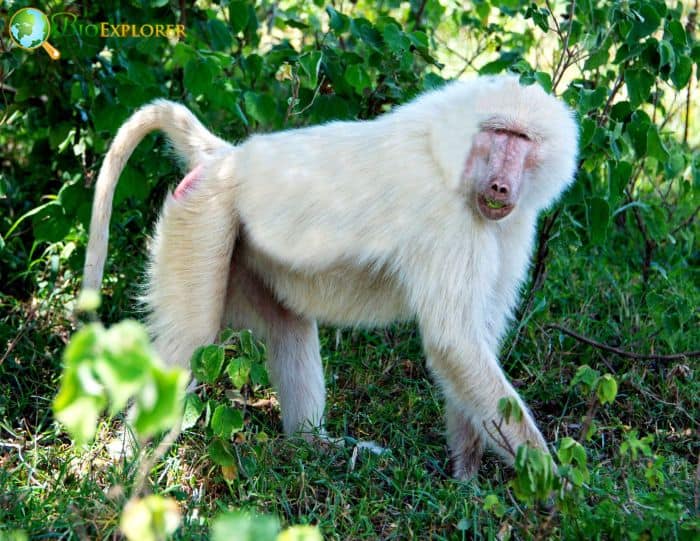
Albino monkeys, on average, have a shorter life expectancy than their non-albino peers due primarily to health complications arising from albinism. The absence of melanin in their skin increases susceptibility to solar damage and, consequently, a heightened risk of skin malignancies.
Their sight often suffers since melanin is indispensable in developing both the retina and optic nerves. These health-related issues can notably diminish their quality of life and survival rates.
Social Behavior and Challenges
The behavioral dynamics of monkeys can also be influenced by albinism. Monkeys often rely on visual indicators as inherently social creatures during their interactions. The distinct appearance of albino monkeys may impact how they are perceived and interacted with by other monkeys, potentially resulting in social ostracism. However, this impact varies across different species and even amongst individual groups.
Predation and Survival
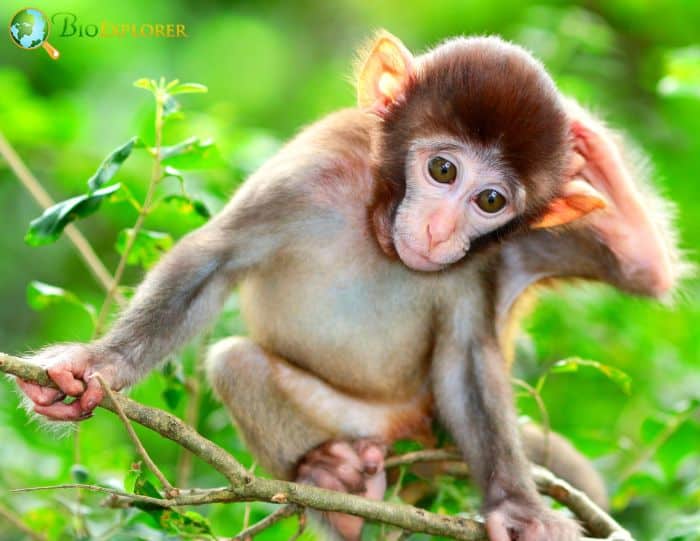
Albino monkeys confront notable adversities in a natural environment. Their lack of inherent camouflage accentuates their visibility to predators, escalating their risk of falling prey. Their compromised vision can further hamper their ability to source food and evade threats. Yet, despite these hurdles, instances of albino monkeys surviving and flourishing have been reported, attesting to their remarkable resilience and adaptability.
Within the confines of captivity, albino monkeys, shielded from predators, frequently become the focal point due to their distinctive physical attributes. This constant attention could induce stress and anxiety, impacting their health and well-being.
The existence of an albino monkey epitomizes the profound influence of genetics on an organism’s life journey. It further highlights the necessity for comprehensive understanding and proactive measures to cater to these animals’ singular requirements and challenges to safeguard their well-being and promote survival.
Albino Monkeys in Captivity
Albino monkeys in captivity, such as zoos and sanctuaries, receive special care to accommodate their unique needs and ensure their well-being.
Care for Albino Monkeys in Zoos and Sanctuaries
In zoos and sanctuaries, efforts are undertaken to create living conditions for albino monkeys that limit their exposure to direct sunlight, thereby diminishing the probability of skin-related harm. Routine health evaluations are conducted to watch for potential eyesight issues and skin disorders frequently linked to albinism.
An additional consideration is extended to their social integration needs to prevent isolation, a potential side effect of their unique physical features. Caretakers employ various enrichment activities to foster social engagement and mental invigoration.
Suggested Reading:
15 Best Zoos in the USA
Albino Monkeys in the Wild
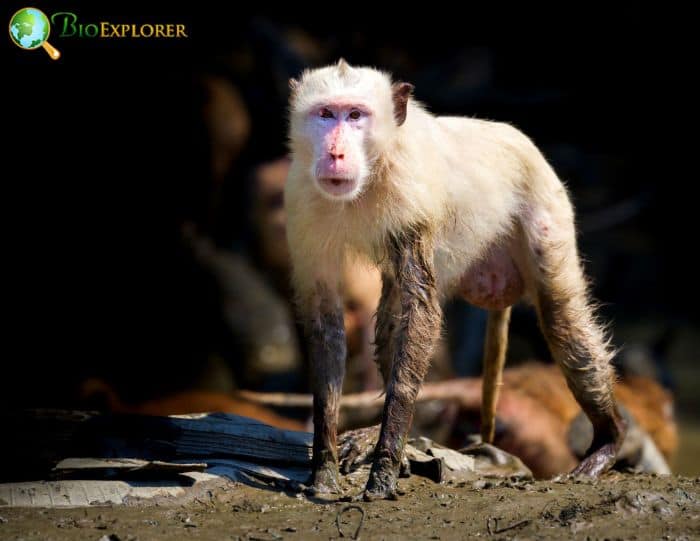
Albino monkeys exhibit a diverse distribution across regions worldwide, contingent upon their respective species. Notably, albino orangutans have been documented in the lush rainforests of Borneo.
In contrast, sightings of albino gorillas have been noted in the forests of Central Africa. Albino capuchin and spider monkeys are indigenous to the tropical forests spanning Central and South America.
Challenges in Natural Habitats Within their natural habitats, albino monkeys face formidable challenges. Their lack of natural camouflage renders them more conspicuous to predators, elevating predation risk. Impaired vision can also impede their ability to secure sustenance and elude threats. Furthermore, their distinctive appearance can impact social interactions with fellow monkeys, potentially resulting in social exclusion.
The absence of melanin in their skin heightens their vulnerability to sun-induced damage, increasing their susceptibility to skin cancers. These health concerns and the augmented predation risk often contribute to a shortened lifespan for albino monkeys in their natural environments.
Conservation Endeavors Given the distinct challenges encountered by albino monkeys, conservation efforts assume critical significance. These initiatives encompass preserving their natural habitats, conducting research endeavors, and promoting public education to foster awareness about these amazing creatures and the imperative of their conservation.
Organizations such as the Borneo Orangutan Survival Foundation and numerous zoos and sanctuaries globally play instrumental roles in these conservation endeavors. These entities provide essential care for albino monkeys while undertaking research endeavors to enhance comprehension of these animals and contribute to their protection.
Suggested Reading:
Top 7 Tropical Rainforest Animal Adaptations
Conclusion
In this exploration of Albino Monkeys, we have examined their genetics, the impact of albinism on their lifespan and behavior, and the challenges they face in the wild and captivity. Albinism presents unique obstacles for these monkeys, including increased visibility to predators and potential social exclusion. However, they display resilience and adaptability in adverse circumstances.
The presence of albino monkeys emphasizes the need to understand and address the distinct needs of animals with genetic conditions, while conservation efforts are crucial for their well-being. Their existence illuminates the intricacies of nature and our responsibility to comprehend and protect it.


